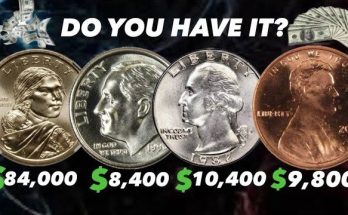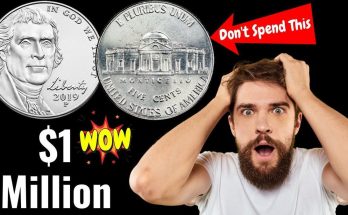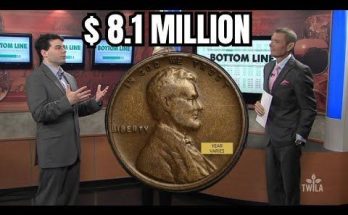YOU may have an $11,700 quarter on your hands but it must have a specific date to sell for thousands.
The 1968 date is the reason behind such a high price tag as it was the year the US Mint accidentally struck the quarter on a silver planchet.
“These coins were not supposed to be struck like this,” said TikToker and coin collector TreasureTown.
He recently posted a TikTok discussing the sale of the 1968 quarter.
The TikToker shared that this type of coin is known as a proof coin and was prepared with dyes from the San Francisco Mint.
Proof coins are not made for the public in the same way business strikes are.
These types of coins are early samples of a coin issue made for archival purposes and for checking dyes.
“This quarter was supposed to be struck on clad coinage not silver,” he added.
The collector said that the coins were not even supposed to exist as they should not have been minted past 1964.
In fact, he revealed that the Mint was striking the coin in 1966 but backdating them for continuity.
Additionally, the Mint wanted to make sure that they “had a uniform appearance and say that 1964 was a cutoff date,” the collector said.
The coin was so rare and valuable that it ended up selling for $11,700 from Heritage Auctions back in May 2022.
COINING IT
While quarters are valued at only 25 cents, many can be worth thousands of dollars more.
For example, a 1796 Draped Bust Quarter sold online for $23,700 after 77 bids.
The coin was considered a one-year-only type of coin which means it’s the only US quarter struck in the 18th century.
Additionally, it was the first official US quarter.
The obverse features the iconic Draped Bust of Lady Liberty with stars along the sides, Liberty at the top, and the date at the bottom.
The reverse showcases the Heraldic Eagle.
GRADE IT
The value of a coin depends on a variety of factors – especially its grade.
Other factors are mintage, errors, demand, age, design, certification, and condition.
However, the grading is based on a rigid scale, which is what collectors will pay top dollar for.
There are five main components when it comes to a grading scale including strike, surface preservation, luster, coloration, and eye appeal.
Coins are assigned a whole number between 1 and 70, with the highest figure being close to perfect.




